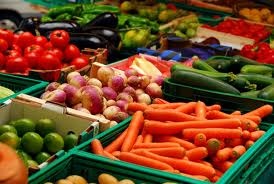The Food and Agriculture Organisation (FAO) Food Price Index dropped for the fourth month in a row in August, reaching its lowest level since June 2012.
The index, which measures the monthly change in the international prices of a basket of food commodities, averaged 201.8 points in August 2013, nearly four points below its July value and 11 points less in August 2012.
Last month's decline was mainly driven by continued falls in the international prices of cereals and oils, however dairy, meat and sugar prices rose slightly.
Peter Lowrey of the FAO Media Relations in Rome who made the report available on Thursday said the FAO expects bumper cereal harvest this year leading to a decrease in the prices of cereals and oils.
The FAO Cereal Price Index averaged 210.9 points in August, down 16.4 points from July and 49.4 points from August 2012.
It said the steep decline reflects expectations for a strong growth in world cereal production this year and, especially, a sharp recovery in maize supplies.
The FAO Oils/Fats Price Index averaged 185.5 points in August, 5.7 points below the July value and the third consecutive monthly decline.
The FAO Dairy Price Index averaged 239.1 points in August, 2.8 points more than in July and 37 per cent above its level in August last year.
The index revealed that prices increased last month for all the dairy products that make up the index, except butter, as export supplies remain limited in major trading countries.
The FAO Meat Price Index averaged 175.0 points in August, an increase of 2.2 points.
Together with the Food Price Index, FAO released a new forecast of world cereal production in 2013, expected to rise to 2 492 million tonnes.
At the latest forecast level, global cereal production would be 179 million tonnes higher than in 2012 and a new record.
World rice production is set to increase by 1.3 per cent, reaching a new high of 497 million tonnes, in milled equivalent.
Global cereal utilisation in 2013/14 is projected at 2 413 million tonnes, down marginally from the previous forecast, but still 3.2 per cent higher than in 2012/13.
Based on the latest forecasts, total use of cereals for direct human consumption is set to expand by 1.2 per cent to 1 094 million tonnes. This would result in global per capita cereal consumption remaining steady at just over 152 kg, with wheat at 67 kg and rice at close to 57 kg.
The forecast of world cereal stocks at the close of seasons in 2014 has been raised slightly since July, to 569 million tonnes, primarily on expectations of higher maize inventories.
The revised forecast puts world cereal stocks at 13 per cent, that is 65.5 million tonnes above their low opening levels and at their highest since 2001/02.
Based on the current projections of overall demand, the increase in stocks would drive up the global stock-to-use ratio to 23.3 per cent, the highest since 2002/03.
Business News of Friday, 6 September 2013
Source: GNA
Global food prices continue to drop

















